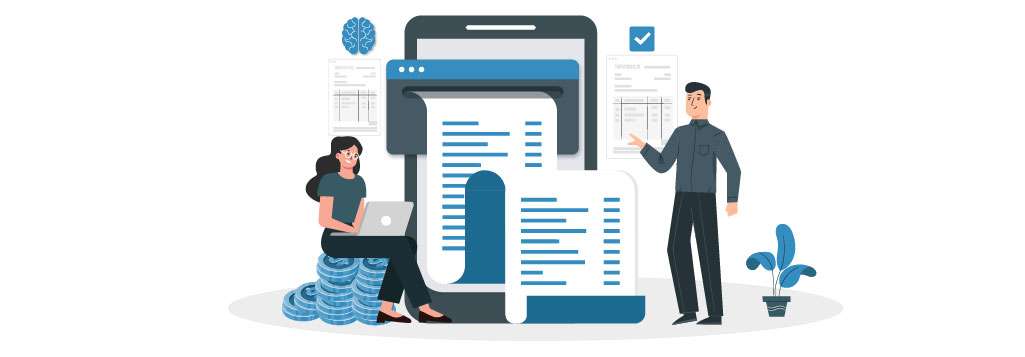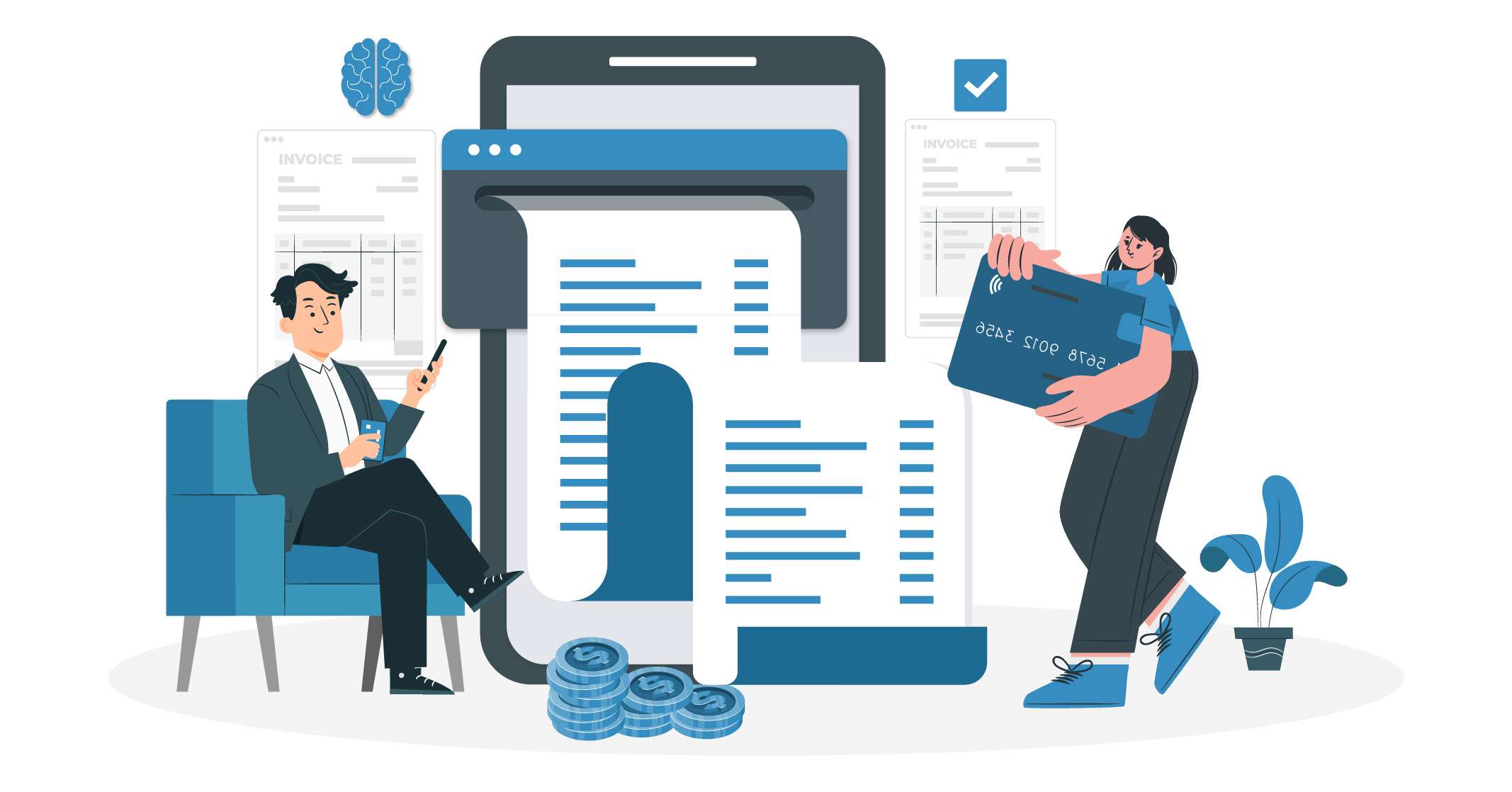Most businesses handle close to 500 invoices every month. Managing business operations and vendors can be a tough task. The higher the number, the more difficult it is to stay organized. Also, if you rely on manual vendor invoice management solutions, you will spend most of your time processing payments only.
All you need are the right systems in place to reduce time spent on accounting activities, automating payments, and building good relations with your vendors. This blog will provide all the details about vendor invoice management, the perils of manual processes, and how automation can help you simplify your work.
What Is Vendor Invoice Management?

The process of vendor invoice management involves managing end-to-end supplier invoices. It is an accounts payable function that includes receiving, auditing, and clearing invoice payments. Multiple small and large businesses rely on manual vendor invoice management solutions to manage accounts.
However, verifying purchase orders and estimates, manually entering data, collecting approvals, sending payments, and making reports can lead to multiple errors and inefficiencies. Let’s see how carrying out these processes manually dampens your business productivity.
What is Vendor Invoice Management Software?
Vendor invoice management software is a smart tool designed to automate and simplify invoice processing workflow. This software helps businesses manage vendor invoices efficiently, ensuring timely payments and reducing manual errors.
Key Features of Vendor Invoice Management Software
- Automated Invoice Processing
This feature uses Optical Character Recognition (OCR) to extract data from invoices, minimizing manual data entry and speeding up processing time. - 3-Way Matching
The software can automatically match invoices with purchase orders and receipts, ensuring accuracy before payments are made. - Real-Time Tracking and Reporting
Businesses can monitor outstanding payments and generate detailed reports on their invoice processing status, enhancing visibility across the organization. - Customizable Approval Workflows
Tailor approval workflows to suit your business needs, allowing for efficient routing of invoices to the right approvers based on predefined criteria.
8 Challenges Faced by Businesses When Using Manual Vendor Invoice Management Solution

Here are a few challenges faced by businesses when they rely on manual solutions:
1. Poor Inventory Management
Every business needs to maintain a good supply of resources. These can be raw materials, machinery, or any software. All of these require you to get help from vendors. As your business grows in size, so will your vendor network. If you fail to clear your invoices on time, it can lead to frustrated suppliers, create bottlenecks, and lead to a dip in inventory levels.
2. Invites Penalties
Managing accounts with manual vendor invoice management solutions can lead to discrepancies when it comes to late payments and you might need to pay penalties. Legacy systems often falter in keeping track of payment cycles, and amounts, and accepting payment methods.
3. Impacts Credibility
Your vendors may send invoices in multiple formats. Processing these invoices can be time-consuming leading to multiple errors and incorrect payments. Consequently, vendors can lead to lower supplies and shorter payment terms. This can also lead to poor service standards and hamper your production line. All these combined will lead to poor brand reputation and loss of goodwill, wherein an awesome invoice payment process can save the day.
4. Increases Data Capture Complexities
With vendors sending in thousands of invoices each year, it can lead to complexities and a need for capturing multiple data points. Missing out on any of them means miscommunication and delays in payments. When you rely on manual methods you will need to process massive invoice information and it can get worse if you have poorly scanned invoices.
5. Poor Cash Flow
Managing multiple invoices creates confusion. Adding to that is the fact that suppliers don’t send invoices at the same time. This can lead to disrupted plans and messed up payment schedules.
Moreover, there are chances that you receive and approve duplicate invoices from the same supplier. Not only will you lead to excess payments, but you will not be able to recover these payments easily. The friction between accounts payable managers and suppliers eventually leads to poor cash flow.
6. No Visibility Across Expenditures
Invoicing with outdated vendor invoice management solutions means siloed information and zero visibility. In the absence of a centralized information process, you cannot tap spending patterns. That leads to mismanaged budgeting and supply chain planning.
7. Disputed Invoices
Maintaining legal compliance when exchanging invoices is a must. Storage, content integrity, and legibility need to be as per local legislation and rules. If you are not complying with the same it can lead to a dispute in the number of invoices and actual price to be paid.
How Automated Vendor Invoice Management Solutions Help You Streamline Accounts?

Now that you know about the disadvantages of manual vendor invoices, let’s know about how automated solutions can help you manage your accounts.
1. Reducing Paper Usage
Lowering the amount of stacks of paper bills can massively reduce data entry and processing time. Businesses often upload scanned and physical paper invoices via emails and other resources. Automated vendor invoice management solutions use Optical Character Recognition (OCR) to extract data. Moreover, these tools incorporate AI and ML technologies to manage invoices and enable real-time tracking.
2. Automated Verification
Verifying invoices manually requires time and is more prone to mistakes. Automated vendor invoice management solutions let you improve quality, accuracy, and speed. With digital invoices, you can directly import your invoices into accounting software. This will help you avoid invoice backlogs, streamline the end-to-end AP process, reduce costs, and improve performance.
3. 3-Way Matching Payables
The main purpose of accounts payable is to ensure all invoices go through a 3-way matching process and ensure timely payments. E-invoices are matched against purchase orders and receipt of goods and sent for payment with zero human intervention in automated systems. However, some invoices may be exceptional and may require you to have a look at them.
Thus, you need to have a system that sets rules. Invoices falling in the category are sent for payments and the exceptional ones are flagged and routed to an authorized person for further action.
Automated vendor invoice management solutions use a 3-way matching process to streamline the accounts payable flow:
- Store –A purchase order is created and secured in a cloud space for quick access.
- Receive – Delivery receipt notes and supplier invoices are collected and details are extracted using Optical Character Recognition (OCR) technology.
- Compare – Final payments are released once the data is compared and validated from the invoice, purchase order (PO), and goods receipt.
4. Improved Efficiency with Optical Character Recognition (OCR) Technology
OCR has been designed to boost the accuracy of your accounts payable. You can rely on it to transfer invoices and process them with 101% accuracy. It lets you scan and extract critical data from invoices including invoice number, vendor’s name, payment amount, and other relevant data.
This data is then fed into your AP system and helps you cut down on errors and save time. Besides, it lets you match invoices by comparing invoices to purchase orders and receipts. Thus, adding a layer of accuracy, preventing overpayments, and processing payments faster.
5. Build Custom Business Rules
With automated solutions, businesses can create custom rules to process invoices and decide on a workflow that suits both parties. These tools offer top-notch AI functionalities that can detect irregular patterns in a vendor’s invoice details. Thus, alerting managers so that they can recommend the best steps as per vendor’s needs.
6. Customize Approval Workflows
When you sort your invoice-receiving process, you can then reduce overall processing time to automate the approval and payment process. For example, you can set up triggers to send invoices to management if a particular set of conditions are met. Otherwise, you can set a specific monetary level.
If you wish to go a step ahead you can create customized triggers if some services require extra inspection. Not only this, you can analyze approval patterns with AI and recommend the same to your vendors keeping in mind their payment preferences.
7. Reduced Data Errors with Machine Learning
Automated vendor invoice management solutions let you review invoice entries against a master file. This helps you manage invoice processing challenges and flag them before they go to the approver. Moreover, you can generate real-time reports with errors and process the correct invoices timely. Machine learning functionalities aid invoice processing with 100% accuracy and require only 10% of your efforts.
8. Advanced Security Measures
Another advantage of using automated invoice management solutions for vendors is that it protects your data and prevents unauthorized access. Multi-factor authentication acts as an efficient safeguard and only the relevant users have passwords to authentication controls. Moreover, you can also choose role-based access controls. Last, but not least, automated invoice solutions provide access to secure hosting that protects you from malware and cyber threats.
Tips to Choose the Right Vendor Invoice Management Software
When selecting vendor invoice management software, consider the following factors:
- Integration Capabilities
Ensure the software can easily integrate with your existing accounting and enterprise resource planning (ERP) systems. - User Experience
A user-friendly interface is crucial for ensuring your team can adopt the software quickly and efficiently. - Customer Support and Training
Evaluate the level of customer support and training offered by the software provider to facilitate a smooth transition.
Serina: Simplifying Vendor Invoice Management Solutions

Serina believes that invoice automation benefits should be enjoyed by all businesses. Now that you know all about the benefits of automated vendor invoice management solutions, it is time we introduce you to Serina. Here is why we should make Serina a part of your business:
- Access all vendor invoice details in real-time
- Track outstanding payments via interactive dashboards
- Keep your vendors satisfied with AP automation
- Guaranteed reduction in data validation efforts with automated line-item data capture.
Benefits of Using Serina Vendor Invoice Management Software
Check out the benefits of using vendor invoice management software :
- Increased Efficiency
Automating the invoice process significantly reduces the time and resources required for manual data entry and payment processing. - Reduced Errors
The software minimizes human errors associated with manual processing, leading to more accurate payments and improved vendor relationships. - Improved Cash Flow Management
By streamlining invoice approvals and payments, businesses can better manage their cash flow, ensuring that payments are made on time and preventing penalties. - Enhanced Security
Modern vendor invoice management solutions provide robust security features, including multi-factor authentication and role-based access, protecting sensitive financial data.
Furthermore, you get access to expense analytics, bots for automated data interchange, BPM and API tools for seamless optimization, and top-risk management functionalities. All these will let you dedicate your time and resources towards improving business operations while we put your accounting on autopilot.
FAQs
1. What are vendor invoices?
It is a document that requests payment for a list of products/services provided to a buyer for a specific transaction.
2. Is there any difference between invoice and vendor invoice?
While a customer invoice denotes the amount receivable from the customer, vendor invoices mention the amount payable to the supplier.
3. What is vendor payment automation?
Vendor payment automation involves automating your accounts payable. This is done to remove bottlenecks created by manual methods and reduce payment processing time.
4. What does invoice coding involve?
Invoice coding is all about embedding extra information into an invoice using a unique system of codes.


